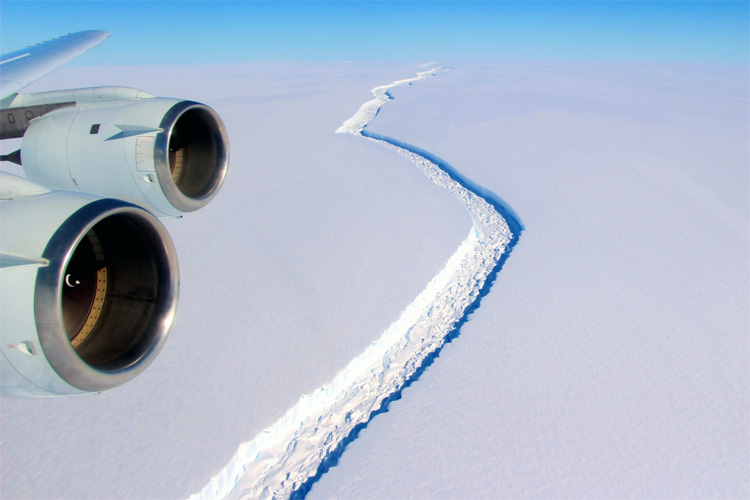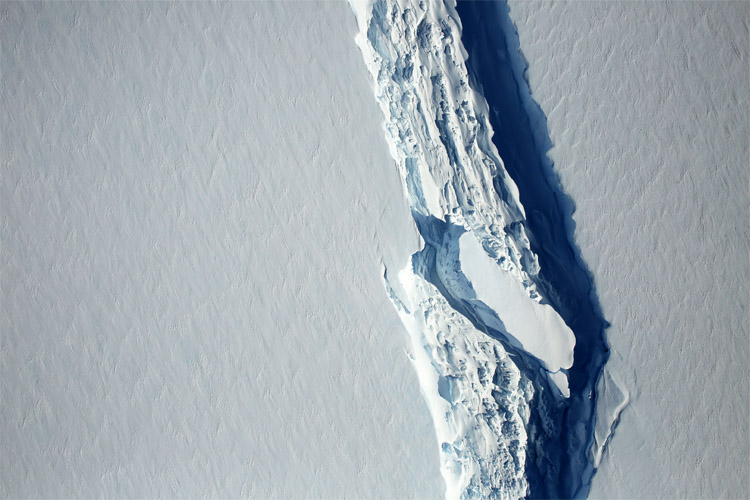One of the biggest icebergs ever recorded broke away from Antarctica.
Scientists have confirmed that an area of around 6,000 square kilometers - the equivalent to Delaware, Lake Erie, Bali, or four times the size of London - has calved away from the region known as the Larsen C ice shelf.
The one-trillion-ton iceberg is 650 feet (200 meters) thick and will not move very far in the upcoming months, but it may become dangerous to cruise ships that navigate through.
Larsen C, a giant mass of floating ice, has never been smaller. According to researchers, it is at its smallest extent since the end of the last ice age, i.e., some 11,700 years ago.
With this calving, Larsen C lost 12 percent of its area. Larsen A and Larsen B are smaller shelves that collapsed around the turn of the century.

The A68
Project MIDAS has been monitoring the ice shelf and confirmed that NASA's MODIS satellite detected the final breakthrough.
"The iceberg is one of the largest recorded, and its future progress is difficult to predict. It may remain in one piece but is more likely to break into fragments," notes professor Adrian Luckman of Swansea University, lead investigator of Project MIDAS.
"Some of the ice may remain in the area for decades, while parts of the iceberg may drift north into warmer waters."
The new iceberg has been named A68.
Scientists underline that the recent calving will not immediately raise sea levels, but it will eventually help change the landscape of the Antarctic Peninsula.
